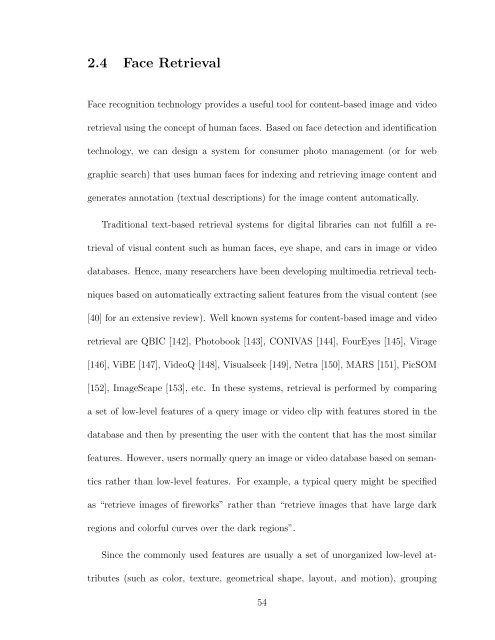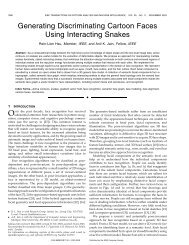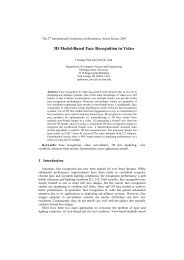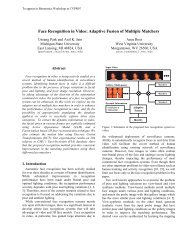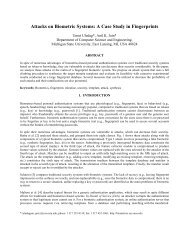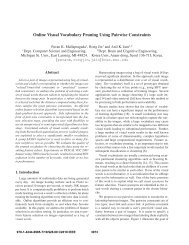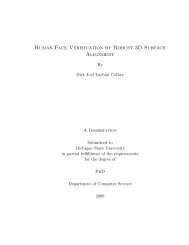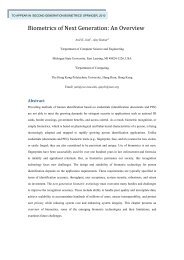Face Detection and Modeling for Recognition - Biometrics Research ...
Face Detection and Modeling for Recognition - Biometrics Research ...
Face Detection and Modeling for Recognition - Biometrics Research ...
You also want an ePaper? Increase the reach of your titles
YUMPU automatically turns print PDFs into web optimized ePapers that Google loves.
2.4 <strong>Face</strong> Retrieval<br />
<strong>Face</strong> recognition technology provides a useful tool <strong>for</strong> content-based image <strong>and</strong> video<br />
retrieval using the concept of human faces. Based on face detection <strong>and</strong> identification<br />
technology, we can design a system <strong>for</strong> consumer photo management (or <strong>for</strong> web<br />
graphic search) that uses human faces <strong>for</strong> indexing <strong>and</strong> retrieving image content <strong>and</strong><br />
generates annotation (textual descriptions) <strong>for</strong> the image content automatically.<br />
Traditional text-based retrieval systems <strong>for</strong> digital libraries can not fulfill a retrieval<br />
of visual content such as human faces, eye shape, <strong>and</strong> cars in image or video<br />
databases. Hence, many researchers have been developing multimedia retrieval techniques<br />
based on automatically extracting salient features from the visual content (see<br />
[40] <strong>for</strong> an extensive review). Well known systems <strong>for</strong> content-based image <strong>and</strong> video<br />
retrieval are QBIC [142], Photobook [143], CONIVAS [144], FourEyes [145], Virage<br />
[146], ViBE [147], VideoQ [148], Visualseek [149], Netra [150], MARS [151], PicSOM<br />
[152], ImageScape [153], etc. In these systems, retrieval is per<strong>for</strong>med by comparing<br />
a set of low-level features of a query image or video clip with features stored in the<br />
database <strong>and</strong> then by presenting the user with the content that has the most similar<br />
features. However, users normally query an image or video database based on semantics<br />
rather than low-level features. For example, a typical query might be specified<br />
as “retrieve images of fireworks” rather than “retrieve images that have large dark<br />
regions <strong>and</strong> colorful curves over the dark regions”.<br />
Since the commonly used features are usually a set of unorganized low-level attributes<br />
(such as color, texture, geometrical shape, layout, <strong>and</strong> motion), grouping<br />
54


